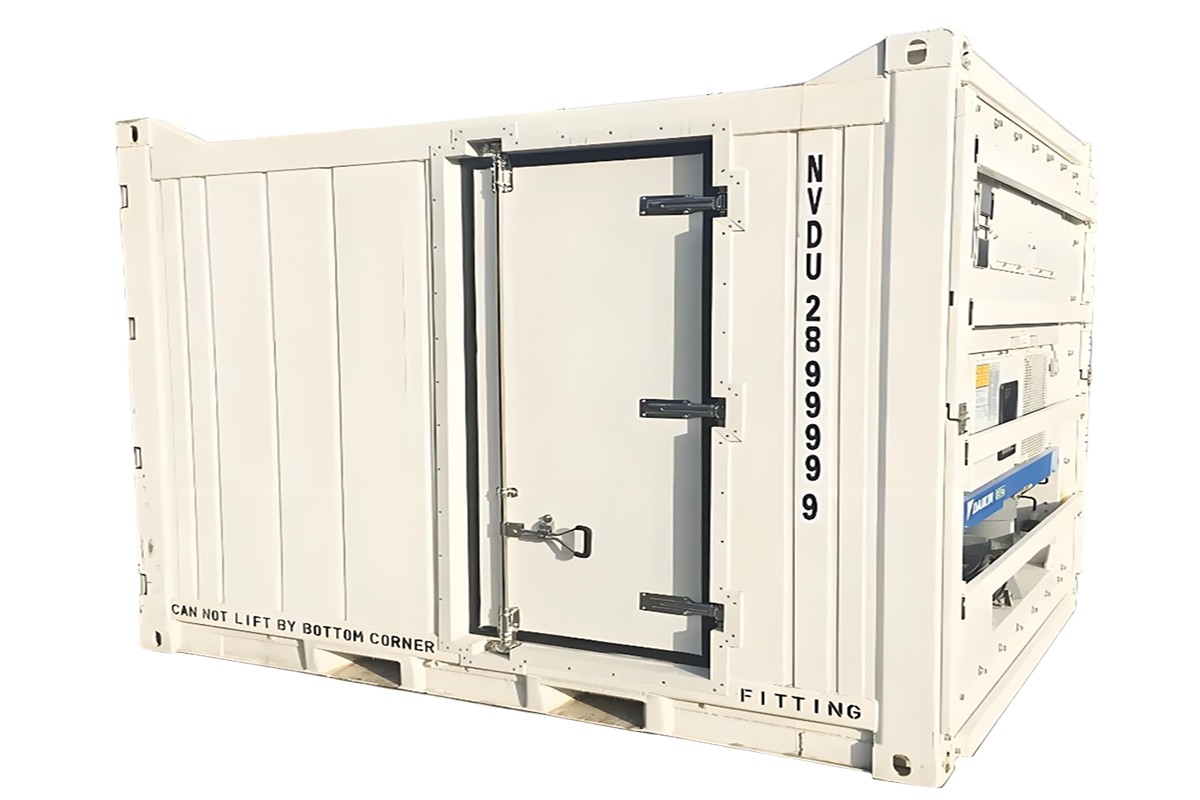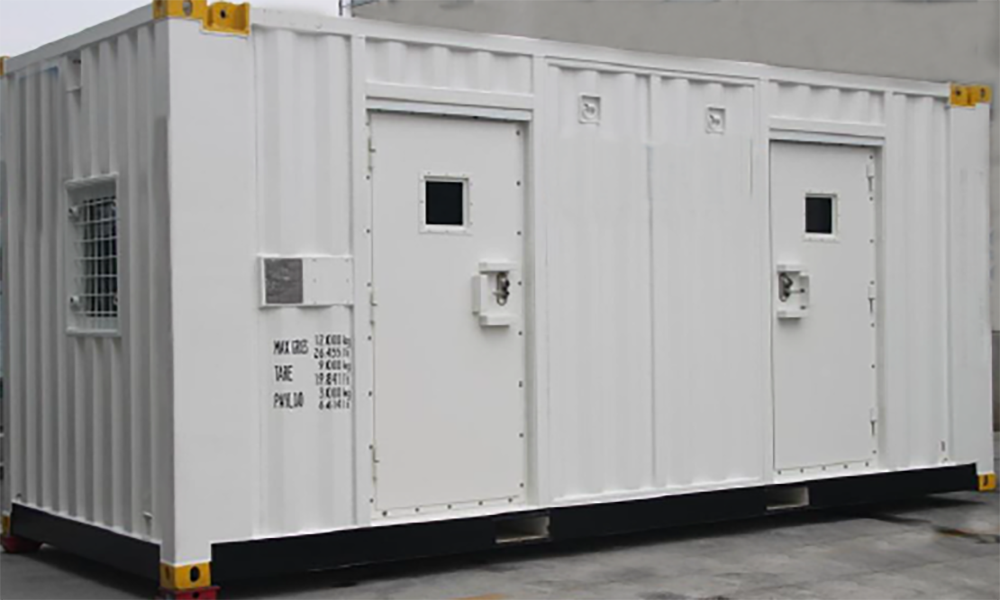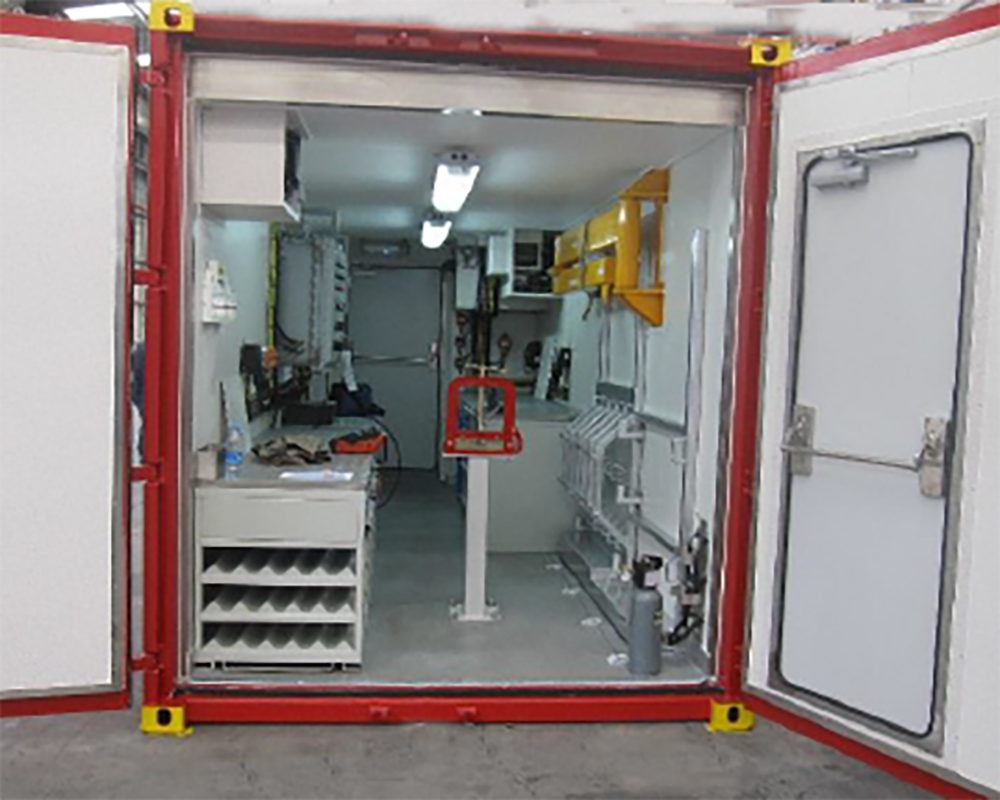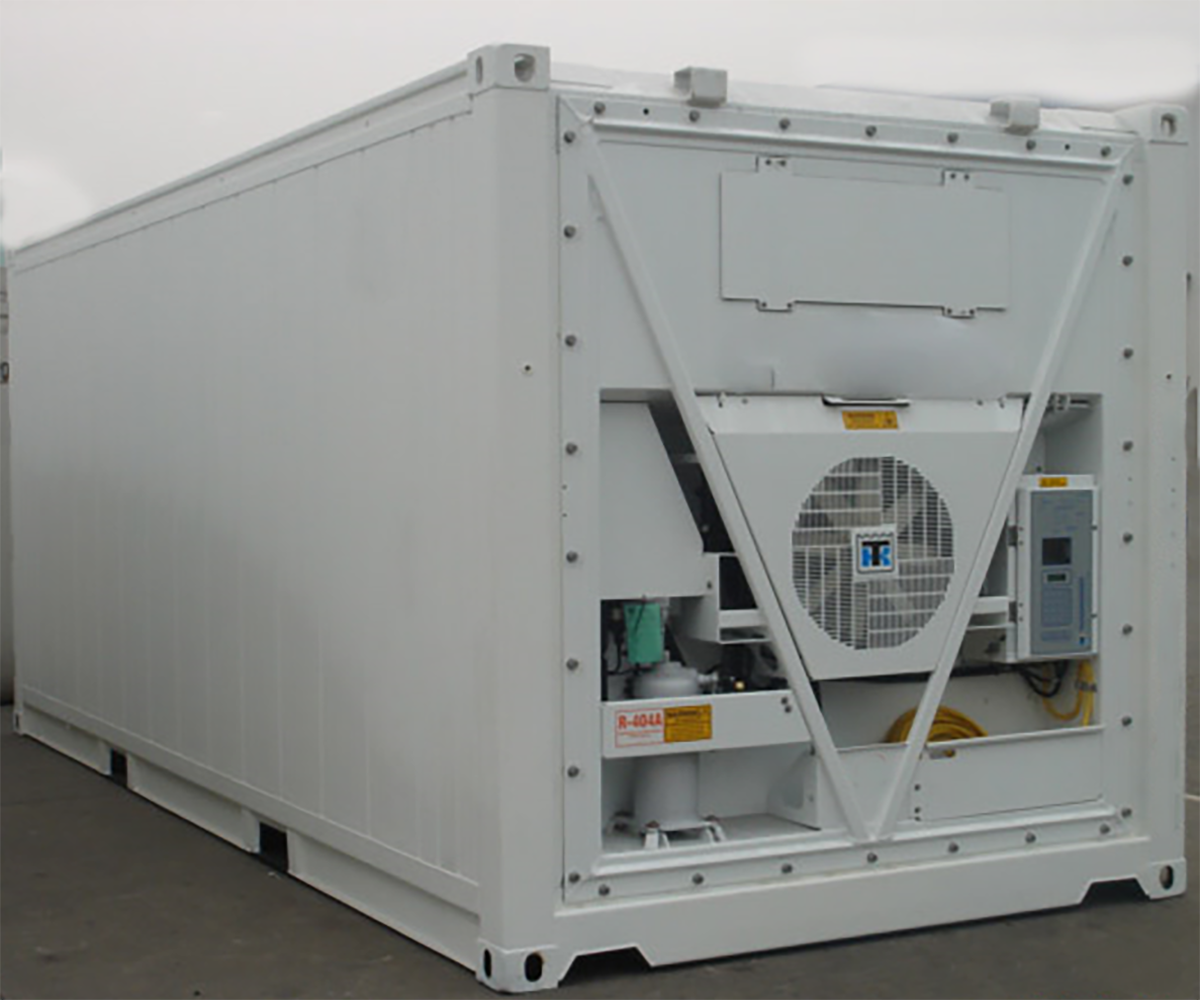PRODUCTS
Categories List
Recent Posts

10FT DNV 2.7-1 offshore refrigerated container is a 10-foot refrigerated container specially used for offshore transportation that complies with the DNV 2.7-1 standard. The following is its relevant introduction:
Features and advantages
Compact size: The 10-foot size is relatively small, with a length, width and height of approximately 2.991m, 2.438m and 2.591m respectively, and the internal volume can reach about 11.6-12.5 cubic meters, which is suitable for some offshore transportation scenarios with limited space, such as small ship transportation, short-distance transportation between offshore platforms, etc.
High strength and corrosion resistance: Manufactured according to DNV 2.7-1 standards, it can withstand harsh offshore environments, and uses high-quality corrosion-resistant materials such as stainless steel. It has good strength and corrosion resistance, can be used at sea for a long time, and reduces maintenance costs.
Good refrigeration performance: equipped with a professional refrigeration system, the temperature can be controlled at ±25 degrees Celsius or even lower, which can meet the requirements of different goods for refrigerated temperature, such as the transportation of perishable goods such as medicines, seafood, meat, fresh fruits and vegetables.
Data monitoring and automatic control: Some advanced models are equipped with a data monitoring system, which can monitor the temperature, humidity and other environmental parameters in the box in real time, and realize automatic temperature and ventilation control to ensure the quality and safety of goods during transportation.
Application field
Mainly used in offshore oil and gas industry, as well as related industries that need to transport perishable goods offshore. For example, on offshore oil platforms, it is used to transport and store daily necessities, medicines and other materials that need to be refrigerated; in offshore fisheries, it can be used to transport freshly caught seafood to maintain its freshness; in some offshore scientific research activities, it can also be used to preserve experimental samples and related materials.
Design and manufacturing requirements
Structural design: It must meet the requirements of DNV 2.7-1 standard for container structure strength, and can withstand external forces such as hoisting, bumps, wind and wave impact during marine transportation. For example, the design of key parts such as lifting lugs must be strictly calculated and tested to ensure safety and reliability during the lifting process.
Material selection: In addition to using corrosion-resistant stainless steel materials, some key structural components may also need to use steel with good low-temperature performance to adapt to the refrigerated environment and low-temperature climate at sea.
Refrigeration system: The refrigeration system must have efficient and stable performance, be able to operate continuously in the harsh environment at sea, and comply with relevant safety and environmental standards. At the same time, the installation and layout of the refrigeration system must be reasonable and do not affect the overall structure and use function of the container.
Certification and inspection: It is necessary to pass the strict certification of DNV (Det Norske Veritas), including a series of inspection items such as structural strength test, refrigeration performance test, and sealing test to ensure that the container meets the requirements of DNV 2.7-1 standards and relevant regulations.
MESSAGE
Please give us a message



